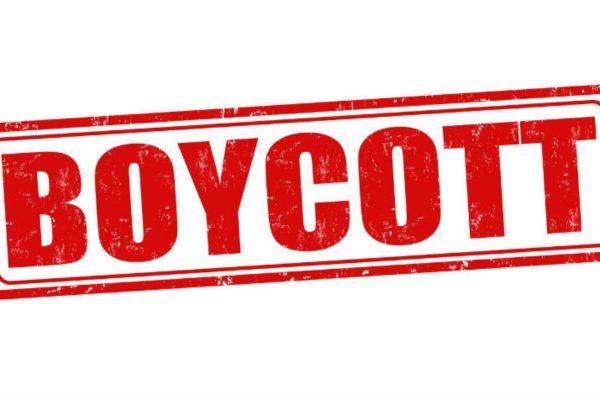Boycotts are nothing new in America. After all, arguably the most consequential consumer movement in American history — the Boston Tea Party — predates the republic itself. But in the wake of the 2016 elections, we must consider how effective they are.
Could their overuse be undermining their very purpose? I say it is. Even worse, boycotts are actually taking power away from those who are the least able to affect political change.
Lost in the discussion lately is what exactly boycotts are supposed to achieve. People who organize them are often outsiders who lack financial or political power. This means they must pursue social and political change through nontraditional tactics, such as targeting companies, because they don’t have the resources to contribute to political campaigns or lobby policymakers directly. Usually, their goal isn’t to hurt a firm’s bottom line but rather to make the public aware of what they believe are unethical corporate practices.
It’s no surprise then that research finds little evidence that boycotts impose lasting economic costs on companies. Instead, boycotts can succeed by winning concessions from companies, changing how firms engage with stakeholders, and pressuring politicians to distance themselves to avoid guilt by association.
These successes, however, have introduced challenges and disadvantages.
First, although boycotts have traditionally been weapons of the weak, we have seen recent efforts by those in power to co-opt the tactic for their own ends — such as President Donald Trump’s criticism of Nordstrom and his supporters’ subsequent call for a boycott. Although a boycott inspired by a presidential tweet is no more likely to succeed than others, the use of the tactic by people with power can delegitimize the serious calls for boycotts by those without power.
Second, boycotting can involve targeting firms indirectly. The most recent example was the call on advertisers of Fox News’ “O’Reilly Factor” to withdraw their sponsorship of the show in the wake of sexual harassment allegations against the host.
Although this boycott succeeded, it introduces a risk that Politico’s Jack Shafer identified: Weary of consumers’ and advertisers’ reactions, media firms may be more cautious in airing controversial voices, in effect giving advertisers implicit control.
It’s easy to see how giving sponsors veto over content is undesirable for marginalized communities on both the left and right.
Additionally, the recent increase in boycotts is likely limiting their effectiveness by overwhelming the public. Between 1990 and 2007, only 213 boycotts were mentioned in the six largest U.S. newspapers; by contrast, in the 200 or so days of its existence, the anti-Trump #GrabYourWallet campaign alone has launched boycotts against over 50 companies.
Beyond this campaign, if you’re on social media or have friends who are, you already know that you’re expected to boycott Target because of bathrooms, Chick-fil-A because of gay marriage, Fox News because of Bill O’Reilly, and Nordstrom because it was unfair to Ivanka. This explosion in activism is overwhelming for consumers, and each new boycott decreases the likelihood of any individual one achieving its broader goals.
Furthermore, firms are learning how to strategically adapt when they’re targeted. In recently published research, my colleague and I found that when activists boycott a firm, politicians respond by distancing themselves, lest the politicians’ reputations be sullied by the boycott.
In a follow-up study, we found that targeted firms do not simply withdraw from politics to avoid the appearance of impropriety but instead resort to tactics that require less disclosure and are harder to trace. As a result, a successful boycott may be a hollow or temporary victory.
Sociologists and political scientists have long viewed boycotts as an important (if not always successful) tool for those who lack the resources or access needed to participate in the formal political process, but this view needs rethinking.
Good first steps for those pursuing change are to be more selective in their targeting and to launch supportive “buycotts.” After all, the highest single day of revenue for Chick-fil-A came when its customers rallied to its defense following a highly publicized boycott.
As it stands now though, the boycott’s efficacy as a weapon of the weak or disenfranchised is lessening in our increasingly polarized world, further reducing the limited power of those who feel that their voices go unheard.
Timothy Werner is an assistant professor in the Business, Government and Society Department at the McCombs School of Business at The University of Texas at Austin.
A version of this op-ed appeared in USA Today, Fortune, Austin American Statesman and the Corpus Christi Caller Times.
To view more op-eds from Texas Perspectives, click here.
Like us on Facebook.




